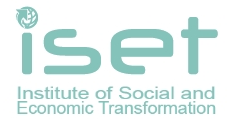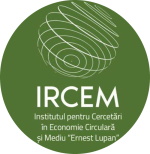Statistical Analysis of Employment and Health Impacts on Demographic Trends in the Kakheti Region of Georgia
Abstract
Introduction. The demographic situation in Georgia and its regions, particularly in Kakheti, remains tense and manifests in a decrease in the birth rate, a negative natural increase, a decrease in marriage and an increase in divorce, and high migration rates. In this regard, there is a need for an in-depth analysis of these factors that reflect serious demographic challenges, to predict future changes in the population structure. Understanding these processes can help develop effective strategies to improve the demographic situation and create conditions for sustainable socioeconomic development in the region.
Aim and tasks. The study aims to conduct a comprehensive analysis of the demographic expectations and existing variations within Kakheti region of Georgia.
Results. The demographic situation in Kakheti region of Georgia was analysed based on the results of a survey conducted monthly from 2023 to 2024 among residents of the region aged 15 to 50 years. The empirical analysis showed that economic conditions and the health of one of the spouses were the main reasons for the decline in the birth rate. For most respondents, the primary source of income was employment in the public sector and private business, with a significant portion of respondents (72.7%) assessing their financial situation as satisfactory. Among the factors influencing health and life expectancy, the respondents highlighted economic well-being (22%) and environmental conditions (21.4%) as the most significant. Families with stable incomes prefer having two or three children, while low-income families are not prepared to have four or more children. The role of economic (income) and educational factors (education level) influencing the demographic attitudes of respondents was emphasised.
Conclusions. There is an apparent discrepancy between the ideal and actual number of children in families. A balance between the desired and actual number of children is lacking n many families. There has been a change in the demographic behaviour of different generations. The main reasons for having fewer children than desired were economic conditions and the health of one of the spouses. For most respondents, the primary source of income was employment in the public sector and private businesses.
Keywords:
demographic expectations, economic well-being, healthcare, income, survey sampling.References
Abesadze, N., Abesadze, O., Kinkladze, R., & Paresashvili, N. (2023). Emigration statistics – The Herald of the Survival. Business and Management, 1-7. Vilnius, Lithuania: Vilnius Gediminas Technical University. https://doi.org/10.3846/bm.2023.945
Alcaraz, M., Hayford, S. R., & Glick, J. E. (2022). Desired fertility and educational aspirations: Adolescent goals in rapidly changing social contexts. Journal of Marriage and the Family, 84(1), 7–31. https://doi.org/10.1111/jomf.12815
Alves, L. C., Leite, I. d., & Machado, C. J. (2008). The concept and measurement of functional disability in the elderly population: A literature review. Ciência & Saúde Coletiva, 13(4), 1199-1207. https://doi.org/10.1590/S1413-81232008000400016
Beenstock, M. (2023). Economic development without rural–urban migration in Georgia. Central Asian Survey, 42(3), 537–560. https://doi.org/10.1080/02634937.2023.2219278
Bierens, J., & Hoogenboezem, J. (2022). Fatal drowning statistics from the Netherlands – An example of an aggregated demographic profile. BMC Public Health, 22, 339. https://doi.org/10.1186/s12889-022-12620-3
Cannistraci, C. V., Valsecchi, M. G., & Capua, I. (2021). Age-sex population adjusted analysis of disease severity in epidemics as a tool to devise public health policies for COVID-19. Scientific reports, 11(1), 11787. https://doi.org/10.1038/s41598-021-89615-4
Dokhturishvili, N. (2024). The main directions of the demographic policy of Georgia and the peculiarities of its manifestation in the Kakheti region. IX International Scientific Conference of TSU: Challenges of Globalization in Economy and Business, 70-75. Tbilisi: TSU.
Gelashvili, S. (Ed.), Abesadze, N., Maisuradze, I., Todradze, G., Kinkladze, R., Khmaladze, M., Shavishvili, P., Charekishvili, L., Chitaladze, K., & Tsiklauri, S. (2022). Demographic and social statistics of the regions of Georgia. Ivane Javakhishvili Tbilisi State University Publishing House.
González-Ferrer, A. (2007). The process of family reunification among original guest-workers in Germany. Journal of Family Research, 19(1), 10–33. https://doi.org/10.20377/jfr-335
Good Calculators. (n.d.). Sample size calculator. Good Calculators. Retrieved November 18, 2025, from https://goodcalculators.com/sample-size-calculator/
Heslop, L. A., Papadopoulos, N., & Bourk, M. (1998). An interregional and intercultural perspective on subcultural differences in product evaluations. Canadian Journal of Administrative Sciences/Revue Canadienne des Sciences de l'Administration, 15(2), 113–127. https://doi.org/10.1111/j.1936-4490.1998.tb00156.x
Jackie, L. (2024). Bayesian modelling of best-performance healthy life expectancy. Journal of Population Research, 41, 8–25. https://doi.org/10.1007/s12546-024-09330-5
Li, J. (2024). Bayesian modelling of best-performance healthy life expectancy. Journal of Population Research, 41, 8. https://doi.org/10.1007/s12546-024-09330-5
Meladze, G. (2023). Low Fertility - the Challenge of Demographic Security of Georgia. Georgian Geographical Journal, 3(2). https://doi.org/10.52340/ggj.2023.03.02.08
National Statistics Office of Georgia. (2024). Population. https://www.geostat.ge/en/modules/categories/41/population
Nunnally, J. C. (1967). Psychometric theory. McGraw-Hill.
Pessin, L., Rutigliano, R., & Potter, M. H. (2022). Time, money, and entry into parenthood: The role of (grand)parental support. Journal of Marriage and the Family, 84(1), 101–120. https://doi.org/10.1111/jomf.12782
Rustaveli Fund. (2010). Georgian demographic development: Social-demographic and family policy. Ministry of Education and Science of Georgia, Institute of Demography and Sociology. Tbilisi, Georgia.
Sakhvadze, A. (2024). Our demographic situation does not allow us to relax, we must make great efforts to avoid finding ourselves in a minority in our own country. https://kvira.ge/924933
Schoffer, O., Schriefer, D., Werblow, A., Gottschalk, A., & Pesc. (2023). Modelling the effect of demographic change and healthcare infrastructure on the patient structure in German hospitals: A longitudinal national study based on official hospital statistics. BMC Health Services Research, 23, 1081. https://doi.org/10.1186/s12913-023-10056-y
Shinjiashvili, T., Chanturia, N., & Metreveli, Sh. (2014). Women's employment and reproductive behavior: Mutual influence in the post-Soviet space. In Demography and Sociology (pp. 88-90). Tbilisi: Ilia State University.
Tan, J., & Shao-Tzu, Y. (2024). A life course perspective: Women's childhood background and family formation trajectories in low-fertility South Korea. Journal of Population Research, 41, 13. https://doi.org/10.1007/s12546-024-09328-z
If the article is accepted for publication in the journal «Economics. Ecology. Socium» the author must sign an agreementon transfer of copyright. The agreement is sent to the postal (original) or e-mail address (scanned copy) of the journal editions.






















